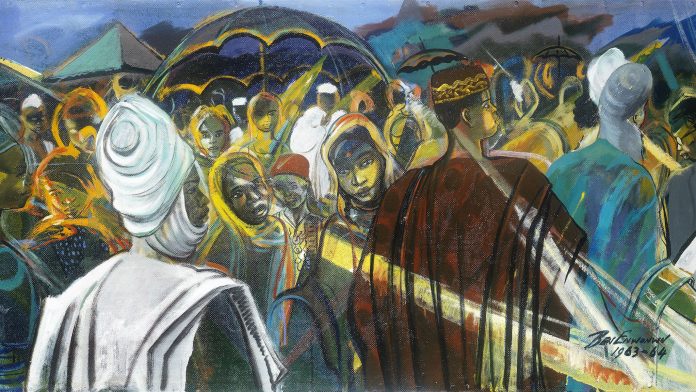The late renowned Nigerian sculptor, Ben Enwonwu, will be turning in his grave. Why? His long-missing painting of an Ife princess that attained an almost mythical status and was unseen in public for decades has been discovered in a north London flat.
The 1973 painting of the Princess Adetutu Ademiluyi, known as Tutu, is a national icon in Nigeria, with poster reproductions hanging on walls in homes all over the country. The Onitsha-born artist, regarded as the founding father of Nigerian sculpture, painted three versions of Tutu and the image became a symbol of national reconciliation. But all three were lost and became the subject of much speculation.
Reacting to the discovery of what might be the original Tutu, renowned Nigerian novelist and Booker Prize winner, Ben Okri, described it as the most significant discovery in contemporary African art in over 50 years. “It is a cause for celebration, a potentially transforming moment in the world of art,” he said.
The finders have accepted the plea by the owner of the flat, where the painting was found, that he should remain anonymous because it is clearly not a case of theft. The painting will be sold at Bonhams in London on the 28th of this month – and the sale will also be broadcast live to bidders in Lagos.
It is expected to sell for between £200,000 and £300,000. If it goes over the upper limit it will set a new record for a modern Nigerian artist.
Okri says Tutu’s rediscovery would help bring about a wider re-evaluation of African art. Enwonwu was already world-renowned as the greatest living African artist when, in the summer of 1973, three years after the end of the Nigerian civil war, he encountered the princess and was entranced, asking to paint her portrait.
Enwonwu was a student at Goldsmiths, Ruskin College, University of Oxford, and the Slade in England in the 1940s. He became more widely known when he was commissioned to create a bronze sculpture of Queen Elizabeth II during her visit to Nigeria in 1956, a work that now stands at the entrance of the parliament buildings in Lagos.
However, Tutu is regarded as his greatest masterpiece – the image was on display at his funeral in 1994. The whereabouts of the other Tutu paintings remain a mystery.


















